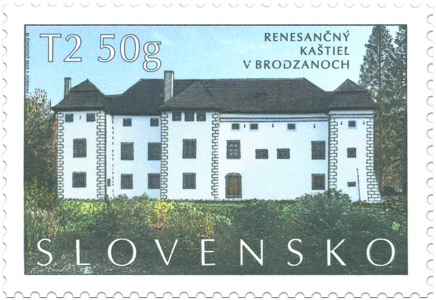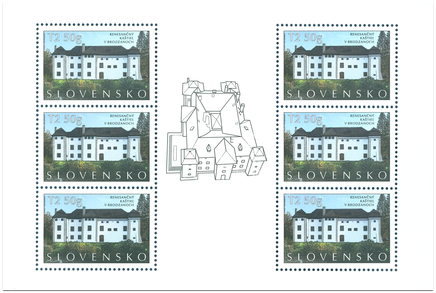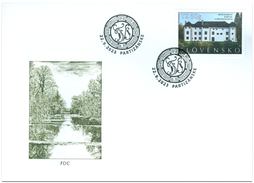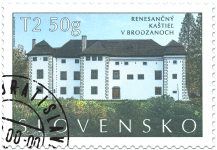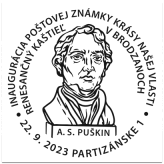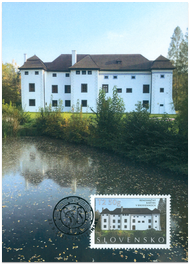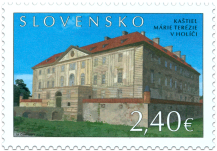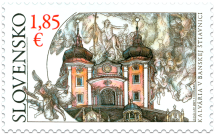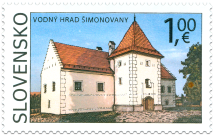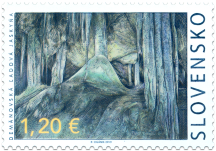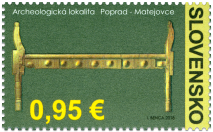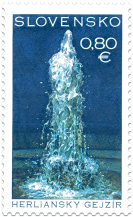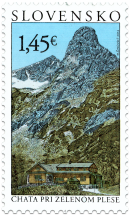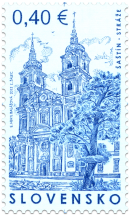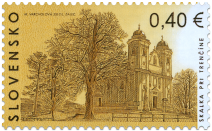800 Date of issue
22.09.2023 Face value
0.90 € Sell price
0.90 €
The dominant feature of Brodzany, a village located in one of the northernmost valleys of Tríbeč, is a Renaissance manor house from the 17th century, surrounded by a large English landscape park. From 1846, it was the family residence of the Austrian Baron Gustav Friesenhof and his descendants for almost a hundred years. The Friesenhofs were closely related to the family of the Russian poet A. S. Pushkin, thanks to which the widow and children of the poet visited them in Brodzany every year.
The manor house is a four-wing, two-story building with a central courtyard, divided by square bastions and an entrance tower. The facades are decorated with squared corners and sgraffito decoration. The building, which is an important representation of the architecture of the rural noble residences of the former Tekov County, was declared a national cultural monument in 1963 for its artistic and historical value.
Over the centuries, the construction of the building has been through a complex series of developments. The original stone residence of the Brogyány family, dating from the mid-15th century, was rebuilt by the new owners at the beginning of the 16th century. The Forgách family converted it into a defensible residence with square bastions and embrasures on the ground floor. After 1660, ownership of the Brodzany estate moved into the hands of the noble István Kvassay senior, an advocate who worked in the service of the archbishops of Ostrihom. In an effort to convert it into a family residence, he restored the very neglected manor house and expanded it with a fortified forecourt with corner bastions, an entrance tower and embrasures. Thus, the Kvassay residence took on the character of a fortified house and during the Turkish invasions of Ponitrie it not only provided protection to family members, but also to the inhabitants of Brodzany. In order to increase the comfort of the living spaces, at the end of the 17th century, further late-Renaissance construction modifications took place, these were followed, over the course of the following century, by a Baroque reconstruction of the manor house. In the 19th century, the Friesenhofs gave their residence a more romantic look and added a wing where they placed their library. The English landscape park surrounding the manor house formed a whole with the nearby Hôrka hill, on which a funeral chapel and a romantic summer house was constructed.
After World War II, the noble residence was seized by the state and fell into disrepair over the decades. From 1971 to 1979 general repairs to the house returned it to its Renaissance glory. Once the repairs were complete the manor house became the headquarters of the A. S. Pushkin Slavic Museum, which operates under the management of the Slovak National Library, which realised last reconstruction of façade in 2021.
Alexandra Lukáčová
Show less© 2024 POFIS - Postal philatelic service. All rights reserved

